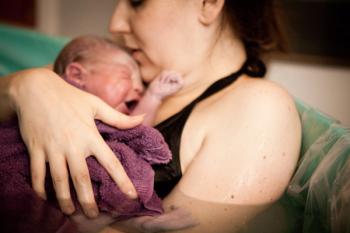Embryo evaluation can be improved through the application of artificial intelligence (AI), according to a recent study published in the American Journal of Obstetrics & Gynecology.
Takeaways
- A recent study published in the American Journal of Obstetrics & Gynecology suggests that AI can enhance embryo evaluation, especially in the context of in vitro fertilization (IVF).
- Although selecting the best embryo is crucial for successful IVF, there is no universally accepted grading system for evaluating the quality of blastocyst morphology.
- Embryos can be monitored using time-lapse imaging, which captures images at regular intervals and assembles them into videos for morphological assessment. Convolutional Neural Networks (CNNs), a type of deep learning, are being employed to process this data effectively.
- The study's results indicate that AI can improve the accuracy of embryo evaluation. In some cases, AI models outperformed human embryologists, achieving higher accuracy in predicting embryo quality and developmental stage.
- The study recommends further research to explore the application of CNNs in IVF and to enhance their effectiveness in determining embryo quality and implantation potential.
To ensure successful in vitro fertilization (IVF), the most appropriate embryo must be determined. Despite this, a universal grading system for evaluating the quality of blastocyst morphology has not been developed. Common criteria used include inner cell mass characteristics, blastocoel cavity expansion, and trophectoderm development.
Embryos can be monitored in incubators through time-lapse (TL) imaging. The TL system includes a built-in microscope and captures images every 5 to 10 minutes, which are then assembled into a video for morphologic and morphokinetic evaluation.
Another method of embryo evaluation is through a convolutional neural network (CNN), a deep learning (DL) class based on AI. CCNs can evaluate large data sets and process 2-dimensional data in a grid pattern.
Interest has arisen in using AI in artificial reproduction technology research. This can be accomplished in IVF by determining the quality of an embryo based on developmental stage or implantation potential.
Investigators conducted a systematic review to evaluate the accuracy of CNN models and DL application for identifying the most appropriate embryo using TL monitoring. Literature published by December 2022 was identified through systematic searches of the PubMed and Web of Science databases.
Search terms included “Embryo Transfer,”“IVF,” “blastocyst,” “artificial intelligence,” and “convolutional neural network.” Eligibility criteria included assessment of CNN method, aimed at assessment of embryo image, captured by TL monitoring, and containing data on CNN method accuracy.
Exclusion criteria included using nonhuman subjects, evaluating sperm or oocyte, evaluating embryo culture medium, using image enhancement procedures or light microscopes, being an abstract articleor review article, and not being published in English.Results were screened by 2 independent review authors using the Covidence systematic review software (Veritas Health Innovation, Melbourne, Australia).
Data extracted included publication year, study design, ethical statement, clinical application, reference standard, inclusion and exclusion criteria, study population, database size, online database use, number of patients, whether a cross-validation was performed, CNN architecture, evaluation metrics, and performance results.
Positive predictive value, accuracy, sensitivity, and area under the receiver operating characteristic curve were used to report CNN performance. Outcomes included blastocyst morphology quality and grading, embryo stage classification, and successful IVF.
There were 22 studies published from January 2016 to December 2022 included in the analysis. Evaluations of 522,516 images of 222,998 embryos were completed across these studies, with 46% of studies analyzing blastocyst morphology quality and grading, 33% successful IVF outcomes, and 21% stage classification.
In a model for live birth prediction, an area under the curve (AUC) of 0.64 was achieved. This model highlighted focused areas to determine live birth vs nonlive birth. Focused areas around the zona pellucida were successfully demonstrated, but none were associated with live or nonlive births.
Another study developed a CNN model which had increased accuracy compared to embryologists, at 75.2% vs 67.3%. Models for embryo stage classification were evaluated in 5 studies, with accuracies ranging from 67.68% to 97.62%. One CNN model assessing the overlaps between cells and imbalance between stages had an accuracy of 80.6%.
Blastocyst morphologic quality was classified in multiple studies, with one having an AUC of 0.98 and accuracy of 97.5%. Other models achieved accuracies of 89.6% and 78.2%.
These results indicated AI may allow for improved accuracy in embryo evaluation. Investigators recommended further studies to establish CNN application in IVF.
Reference
Berman A, Anteby R, Efros O, Klang E, Soffer S. Deep learning for embryo evaluation using time-lapse: a systematic review of diagnostic test accuracy. American Journal of Obstetrics & Gynecology. 2023;229(5).doi:10.1016/j.ajog.2023.04.027
















